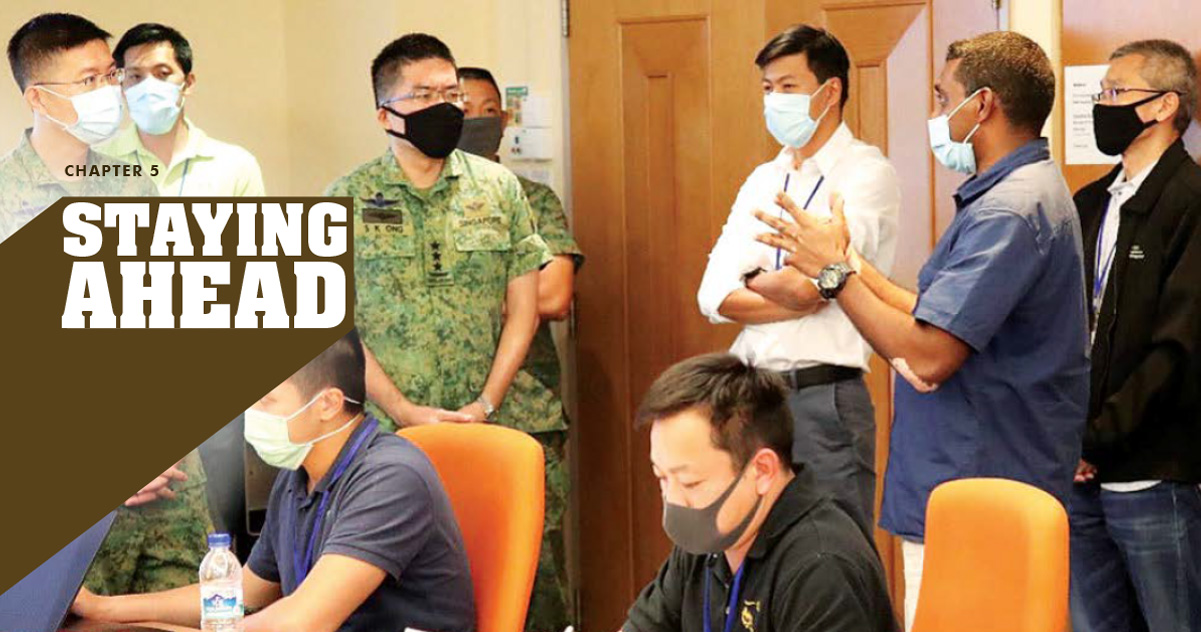
COA MG Goh Si Hou and CDF LG Melvyn Ong being briefed on how Medical Operations Task Force improved situation awareness by fusing multiple sources of epidemiology data and healthcare capacity data.
Source: MINDEF
By that time, EHTF and JTF(A) had swung into action. Four SAF camps had begun operating as temporary housing facilities for migrant workers and a few more camps were in the process of being converted for the same purpose. Every day, about 400 migrant workers from at-risk dormitories were being processed to move into these clean sites and other isolation facilities. But the problem was far from being over. COVID-19 cases continued to soar in the dormitories and demand for care facilities and resources was surging. More agencies had to be roped in to provide the care. JTF(A) was responsible for recovery-in-place in the dormitories; MOH managed the hospitals and CCFs; many others ran the Community Recovery Facilities (CRFs) and worker decant sites. Everyone understood that the mission was to isolate and care for the patients. But a key element was missing. There was no coordination to piece together information on the COVID-19 patients and project requirements for the beds in hospitals, CCFs or CRFs. The centralised entity in MOH assigning hospital bed spaces nationwide was a small outfit with limited capacity. Moreover, each facility had its own bed management system. With no overview of the flow of patients, many care facilities came close to being overwhelmed.
In the early days when COVID-19 struck Singapore, confirmed, suspected and “clean” cases were managed via targeted approaches. Many different facilities were set up for different purposes such as testing, isolation and treatment. The large number of cases required painstaking tracking and coordination, as well as resource-intensive transportation.

SAF personnel supporting the conveyance of migrant workers across recovery and isolation facilities.
Source: MINDEF
There was also the challenge of how to efficiently transport patients from one facility to another. Without centralised control, the emergency transportation (or conveyance) system was on the verge of being overloaded. There was an urgent need to develop comprehensive situation awareness of the stock and flow of COVID-19 patients across the care facilities and to set up a centralised emergency transportation system. The SAF task forces also had to look beyond these immediate needs and anticipate operational demands so that we could gain the initiative in the fight against the virus.